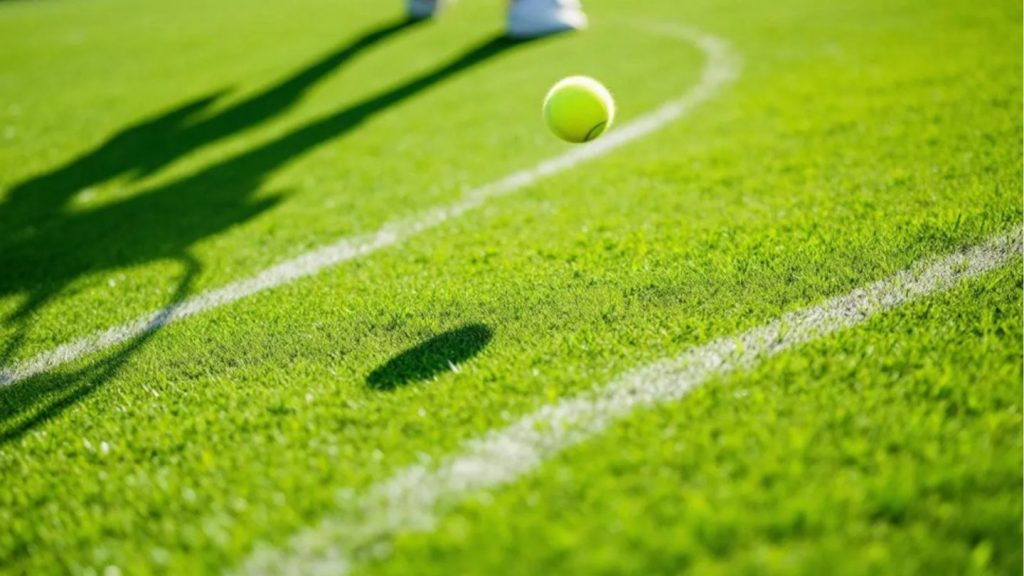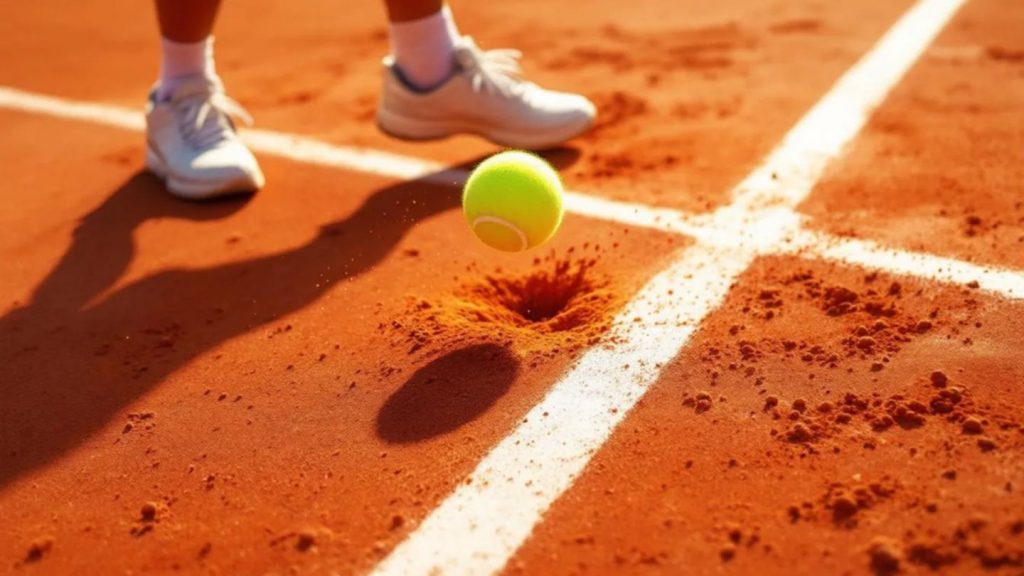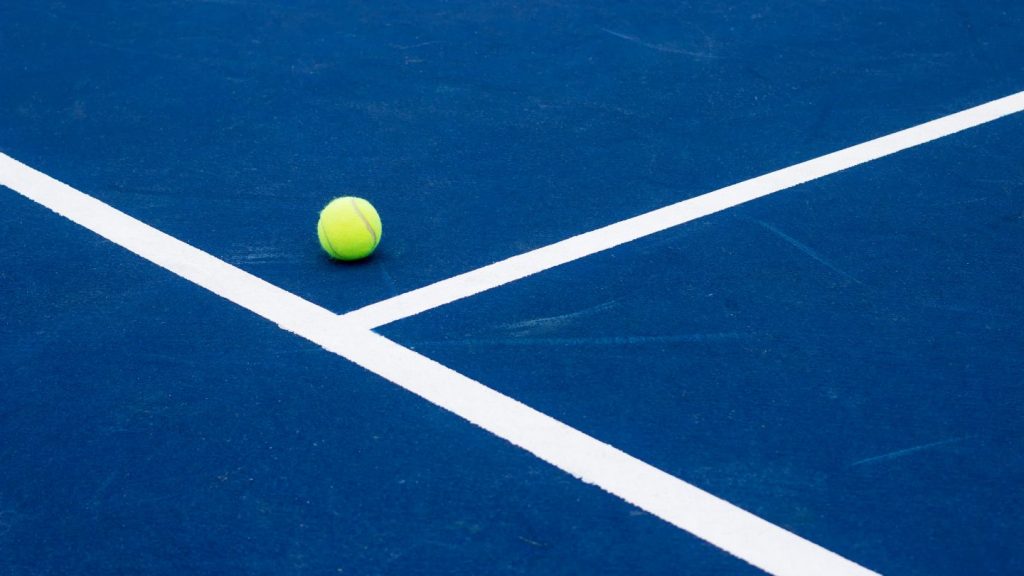Tennis court surfaces play a crucial role in the speed and style of the game. Each surface, clay, grass, and hard, offers distinct characteristics that influence ball bounce, player movement, and match duration. Grass courts are known for their slick texture and low bounce, favoring fast-paced play. Clay courts slow the game with a higher bounce and longer rallies. Hard courts provide a balanced middle ground, offering consistent speed and bounce for a variety of playing styles. In this blog, you will explore the fastest tennis court surface you will find in the market.
Key Takeaways
- Grass courts provide the fastest play with low bounce, favoring serve-and-volley tactics and requiring agile reflexes.
- Hard courts offer a balanced medium-paced environment that accommodates various playing styles, making it a popular choice for major tournaments.
- Clay courts demand strategic and patient play due to their slower pace and higher bounce, rewarding players who excel in generating topspin.
Speed and Bounce on Grass Courts

Grass courts are renowned for their speed and low bounce, which dramatically influence the dynamics of a tennis match. Key characteristics include:
- The slickness of the grass allows the tennis ball to slide and skid, resulting in a lower bounce and extremely fast play.
- This quick surface rewards players who adopt aggressive play styles.
- It favors those who are bold and willing to take risks during matches.
- Serve-and-volley tennis is particularly effective on grass courts, as the fast pace requires quick reflexes and agile movement.
The unique characteristics of court dimensions and grass courts can create challenges for players not accustomed to such conditions. The low bounce and speed demand a specific skill set, making it a surface where only the most adaptable and agile players excel. Thus, playing on grass courts is both a rewarding and demanding experience, pushing players to refine their techniques and strategies.
Characteristics of Hard Courts
Hard courts strike a balance between the speed of grass courts and the slow, strategic play of clay courts. Constructed with synthetic or acrylic layers over a concrete or asphalt base, hard courts offer a consistent and predictable tennis court surface that influences both speed and bounce. While not as fast as grass courts, hard courts are faster than clay, providing a medium-paced playing environment.
The durability and low maintenance requirements of hard courts make them a popular choice for many tennis facilities. Acrylic hard courts, for instance, typically require recoating every 4 to 8 years, making them a practical option for both indoor and outdoor courts. Whether you are a big server, a powerful baseline player, or an all-court player, hard courts provide a versatile and balanced environment that caters to diverse strategies, benefiting such players. For long-term use, understanding how to keep your tennis court in top shape is essential, as precision maintenance can significantly extend surface life.
Play Dynamics on Clay Courts

Clay courts, with their distinctive red clay or green clay surface, offer a unique playing experience characterized by a slower pace and a higher bounce. The slower speed of clay courts leads to longer rallies, as players have more time to react to shots and position themselves. This slower pace not only tests a player’s endurance but also demands a strategic and patient approach to the game, especially during clay court tournaments.
The high bounce on clay courts allows players to utilize topspin effectively, making it a surface that rewards those who can generate and handle spin shots. Shots involving topspin and backspin excel on clay, as the surface enhances the spin’s effectiveness. This dynamic can significantly impact the speed and outcome of a tennis match, often leading to intense, drawn-out battles. Players can also enhance their performance by selecting the best tennis balls for different court types, ensuring they match ball characteristics to clay’s unique spin and bounce dynamics.
The use of crushed brick in the construction of clay tennis courts not only contributes to their distinctive appearance but also affects how the ball moves and bounces. This material choice, combined with the surface’s natural properties, creates a playing environment that is both challenging and rewarding for those who can adapt their game accordingly.
How Court Surfaces Affect Play Styles
The type of tennis court surface significantly influences play styles and strategies. Grass courts, with their fast pace and low bounce, are ideal for serve-and-volley tactics. These courts require players to have quick reflexes and agile movements, making serve-and-volley tennis a common sight on grass. Players who excel in this style often dominate on grass courts, leveraging the surface’s speed to their advantage in the volley game.
Clay courts necessitate a more strategic and patient approach due to their unique characteristics:
- The slower pace and higher bounce encourage longer rallies.
- There is a greater emphasis on endurance and precision.
- Baseline players thrive by utilizing topspin and outlasting opponents in extended exchanges.
- The surface rewards players who can maintain consistency and control throughout the match.
Hard courts offer a balanced environment that supports a variety of playing styles. Whether you prefer power and precision or a mix of both, hard courts cater to diverse strategies. The surface’s consistent bounce and medium speed make it an all-around choice for players looking to hone different aspects of their game.
Adapting footwork and movement strategies is crucial, as players must be able to slide on clay and react quickly on grass to succeed on these different surfaces, including a slippery surface.
Maintenance and Durability of Tennis Court Surfaces

Maintaining a tennis court surface is essential for preserving its playability and longevity. Grass courts, for example, require meticulous upkeep, including mowing the grass to an exact height of 8mm for optimal playing conditions. Grass court maintenance also involves managing moisture levels to prevent the surface from becoming uneven or developing bare patches. Due to these high maintenance requirements, natural grass courts are less commonly constructed.
Clay courts also demand significant upkeep. Daily watering and sweeping are necessary to maintain the surface’s integrity and ensure consistent play. While moisture benefits clay courts by preventing the surface from becoming too dry, excessive rain can lead to delays in play and require time for the court to dry properly. These tasks are crucial for maintaining clay tennis courts in top condition.
Hard courts, known for their durability, generally require less maintenance than grass or clay courts. However, heat and high temperatures can affect hard courts by causing hard surface expansion, which may lead to cracks and changes in playability. Regular inspections and maintenance can help mitigate these issues, ensuring that hard courts remain a reliable and versatile playing surface.
Choosing the Right Surface for Your Game
Selecting the appropriate tennis court surface can significantly impact your playing experience and performance. Grass courts are ideal for players who excel at fast-paced, serve-and-volley play. The fastest surface and quick pace favor those who can take advantage of the lower bounce and aggressive tactics.
Clay courts, with their slower pace and higher bounce, are better suited for baseline players who enjoy extended rallies and strategic play. The ability to generate and handle spin is crucial on clay, making it the slowest surface that rewards patience and precision.
Hard courts offer a balanced playing field that caters to a variety of player strategies. Whether you are an aggressive baseliner, a serve-and-volley player, or an all-court player, hard courts provide a versatile environment that supports different playing styles. Personal preference and playing style should guide your choice of hard court surface, allowing you to maximize your strengths and improve your overall game.
The Role of Weather and Climate
Weather and climate play a huge role in how tennis court surfaces perform:
- Warm, dry days can increase the speed of play on grass courts.
- Damp, cold days have the opposite effect, slowing down the game.
- Managing moisture levels is crucial for maintaining the quality of grass courts.
- Wet-weather covers are often used to protect the surface during rainy conditions.
These covers can significantly extend the playing season by keeping the courts dry and playable.
For clay and hard courts, understanding drying vs curing for tennis court surfaces is vital, as temperature and humidity directly influence how the surface sets, its durability, and when it’s ready for play. Hard courts are also affected by weather, particularly heat. High temperatures can cause the surface to expand, potentially leading to cracks and altering the court’s playability. Regular maintenance and inspections can help mitigate these effects, ensuring that hard courts remain in good condition regardless of the weather.
Understanding how weather and climate affect different surfaces, including other surfaces and three surfaces, can help players prepare for varying conditions and adapt their strategies accordingly. Whether playing on grass, clay, or hard courts, being aware of these factors can enhance your overall performance and enjoyment of the game.
Indoor vs Outdoor Courts
Indoor tennis courts provide a controlled environment, free from weather disruptions such as wind or sun glare. This consistency allows for predictable gameplay, making it easier for players to focus on their techniques and strategies. Indoor courts are often equipped with surfaces similar to outdoor hard courts, ensuring a reliable and versatile playing experience.
Outdoor courts, however, offer a different set of challenges and benefits. Players must contend with varying weather conditions, which can influence the speed and behavior of the tennis ball. Modular plastic tile courts are sometimes used for temporary indoor setups, but they are generally less durable compared to traditional hard courts.
The choice between indoor and outdoor courts often comes down to personal preference and the specific needs of the player. Indoor courts provide a stable and predictable environment, while outdoor courts offer the excitement and variability of playing in natural conditions. Both options have their advantages, and understanding these differences can help players make informed decisions about their training and competition environments.
Understanding Court Speed for Better Play and Design
Court surface speed significantly impacts match dynamics, player performance, and strategy. Grass courts lead in speed due to their slick surface and low bounce, while clay courts slow down rallies with higher bounce and longer exchanges. Hard courts provide a balanced option, offering consistent play for various skill levels. Knowing these differences helps players adapt and perform at their best.
At Talbot Tennis, we specialize in high-quality tennis court construction in Georgia, creating custom surfaces that match your playing style and performance goals. Whether you prefer the speed of grass, the control of clay, or the versatility of hard courts, our expert team can design and build the perfect court for you. Contact us today to start your project.
Frequently Asked Questions
What are the key differences between grass, hard, and clay courts?
The key differences between grass, hard, and clay courts are their surface characteristics: grass courts are fast with low bounce, hard courts provide medium speed and consistent bounce, while clay courts are slower with higher bounce. These variations significantly influence players’ strategies and performance.
Why is grass court maintenance so demanding?
Grass court maintenance is demanding due to the need for precise mowing, careful moisture management, and their susceptibility to wear. Regular upkeep is essential to ensure optimal playing conditions.
Which surface is best for baseline players?
Clay courts are the best surface for baseline players, as they facilitate longer rallies with their slower pace and higher bounce. This allows players to develop their groundstrokes effectively.
How does the weather affect tennis court surfaces?
Weather significantly influences tennis court surfaces by affecting ball speed and bounce; warm, dry conditions enhance play on grass courts, while excessive heat may lead to cracks on hard courts.
